
Spanish nobles are persons who possess the legal status of hereditary nobility according to the laws and traditions of the Spanish monarchy and historically also those who held personal nobility as bestowed by one of the three highest orders of knighthood of the kingdom, namely the Order of the Golden Fleece, the Order of Charles III and the Order of Isabella the Catholic. A system of titles and honours of Spain and of the former kingdoms that constitute it make up the Spanish nobility. Some nobles possess various titles that may be inherited, but the creation and recognition of titles is legally a prerogative of the King of Spain.

Francisco del Rosario Sánchez was a Dominican revolutionary, politician, and former president of the Dominican Republic. He is considered by Dominicans as the second leader of the 1844 Dominican War of Independence, after Juan Pablo Duarte and before Matías Ramón Mella. Widely acknowledged as one of the founding fathers of the Dominican Republic, and the only martyr of the three, he is honored as a national hero. In addition, the Order of Merit of Duarte, Sánchez and Mella is named partially in his honor.
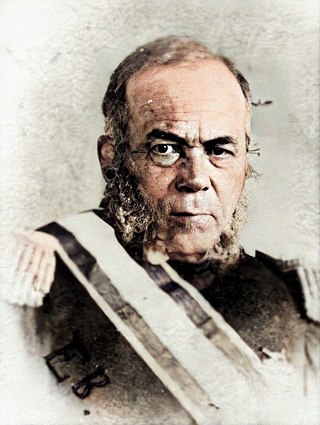
Pedro Santana y Familias, 1st Marquess of Las Carreras was a Dominican military commander and royalist politician who served as the president of the junta that had established the First Dominican Republic, a precursor to the position of the President of the Dominican Republic, and as the first President of the republic in the modern line of succession. A traditional royalist who was fond of the Monarchy of Spain and the Spanish Empire, he ruled as a governor-general, but effectively as an authoritarian dictator. During his life he enjoyed the title of "Libertador de la Patria."

Jarabacoa is a town located in the central region of the Dominican Republic. It is the second largest municipality in La Vega Province.

The Dominican War of Independence made the Dominican Republic a sovereign state on February 27, 1844. Before the war, the island of Hispaniola had been united for 22 years when the newly independent nation, previously known as the Captaincy General of Santo Domingo, was unified with the Republic of Haiti in 1822. The criollo class within the country overthrew the Spanish crown in 1821 before unifying with Haiti a year later.

Gregorio Luperón was a Dominican president, military general, businessman, liberal politician, freemason, and Statesman who was one of the leaders in the Restoration of the Dominican Republic after the Spanish annexationl in 1863. Luperón was an active member of the Triunvirato of 1866, becoming the President of the Provincial Government in San Felipe de Puerto Plata, and after the successful coup against Cesareo Guillermo, he became the 28th President of the Dominican Republic. During his government in 1879, he incentivised secularism in the Dominican Republic with the help of the General Captain of Puerto Rico and Eugenio María de Hostos.

The Dominican Restoration War or the Dominican War of Restoration was a guerrilla war between 1863 and 1865 in the Dominican Republic between nationalists and Spain, the latter of which had recolonized the country 17 years after its independence. The war resulted in the restoration of Dominican sovereignty, the withdrawal of Spanish forces, the separation of the Captaincy General of Santo Domingo from Spain, and the establishment of a second republic in the Dominican Republic.

The Spanish occupation of the Dominican Republic was a brief period of Spanish recolonization of the Dominican Republic. In 1861, Dominican general Pedro Santana suggested retaking control of the Dominican Republic to Queen Isabella II of Spain, after a period of 17 years of Dominican sovereignty. The newly independent Dominican Republic was recovering economically from the recently ended Dominican War of Independence (1844–1856), when the Dominican Republic had won its independence against Haiti. The Spanish Crown and authorities, which scorned and rejected the peace treaties signed after the dismantling of some of its colonies in the Spanish West Indies some 50 years prior, welcomed his proposal and set to reestablish the colony.
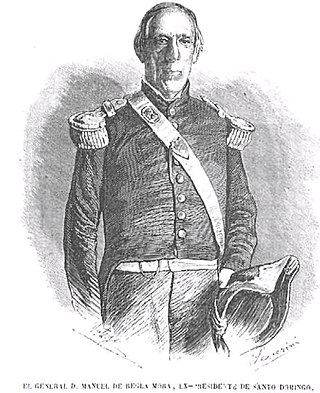
Manuel de Regla Mota y Álvarez was a Dominican military figure and politician. Mota served as the 5th president of the Dominican Republic from May 26, 1856, until October 8, 1856. Prior to that he served as the country's vice president under Pedro Santana.
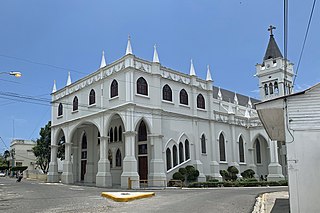
San Pedro de Macorís is a city and municipality (municipio) in the Dominican Republic and the capital of the San Pedro de Macorís province in the east region of the country; it is among the 10 largest cities of the Dominican Republic. The city has approximately 195,000 inhabitants, when including the metro area. As a provincial capital, it houses the Universidad Central del Este university.

The National Pantheon was built from 1714 to 1746 by the Spaniard Geronimo Quezada y Garçon and was originally a Jesuit church. The structure was constructed in the neoclassic-renaissance style. Today, the structure stands as a national symbol of the Dominican Republic and serves as the final resting place of the Republic's most honored citizens.
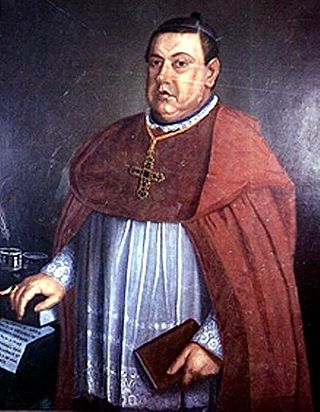
Juan José de Aycinena y Piñol was an ecclesiastical and intellectual conservative in Central America. He was President of the Pontifical University of San Carlos Borromeo from 1825 to 1829 and then of the Universidad Nacional from 1840 to 1865. He was a thinker criticized by liberal historians for his strong relationship with the conservative government of General Rafael Carrera and for eliminating the possibility of getting the Central American Union which the Liberals wanted. His participation in the government has been assessed more objectively in research conducted between 1980 and 2010. He was heir in 1814 to the noble title of III Marquess of Aycinena, and bishop in partibus of Trajanopolis from 1859. He had a taste for law, oratorical talent and wrote over twenty works.
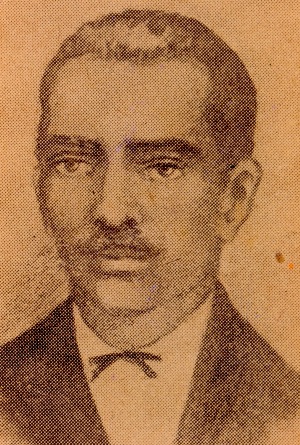
José Joaquín Puello de Castro was a general and government minister from the Dominican Republic. He and his brothers, Gabino and Eusebio, were the only prominent black Dominicans in the Dominican War of Independence.

Tomás Bobadilla y Briones was a writer, intellectual and politician from the Dominican Republic. The first ruler of the Dominican Republic, he had a significant participation in the movement for Dominican independence.

Antonio Duvergé Duval, a Dominican general of French origin and one of the most legendary military figures in the history of the Dominican Republic, served in the Dominican War of Independence. He was a hero and martyr who proclaimed the birth of the new Republic on February 28, 1844, in Bani and days later in Azua.

Francisco Javier Girón, 2nd Duke of Ahumada was a Spanish Army officer known for being the founder of the Civil Guard and its first director-general.
Alonso Álvarez de Toledo y Urquijo, 12th Marquess of Valdueza, GE is a Spanish nobleman. He is the current president of the Junta de Homologación and of the Spanish delegation of the International Council for Game and Wildlife Conservation, an organ he was also vice-president of.
Orlando Salvador Jorge Villegas is a Dominican politician and journalist.
Patricia Selma Villegas García is a lawyer and diplomat from the Dominican Republic.

Count of Torres Vedras is a Portuguese title of nobility created by King Felipe III of Portugal, possibly in 1626, for D. João Soares de Alarcão, 9th Alcaide-mor of Torres Vedras and Governor General of the then Portuguese enclave of Ceuta.

















